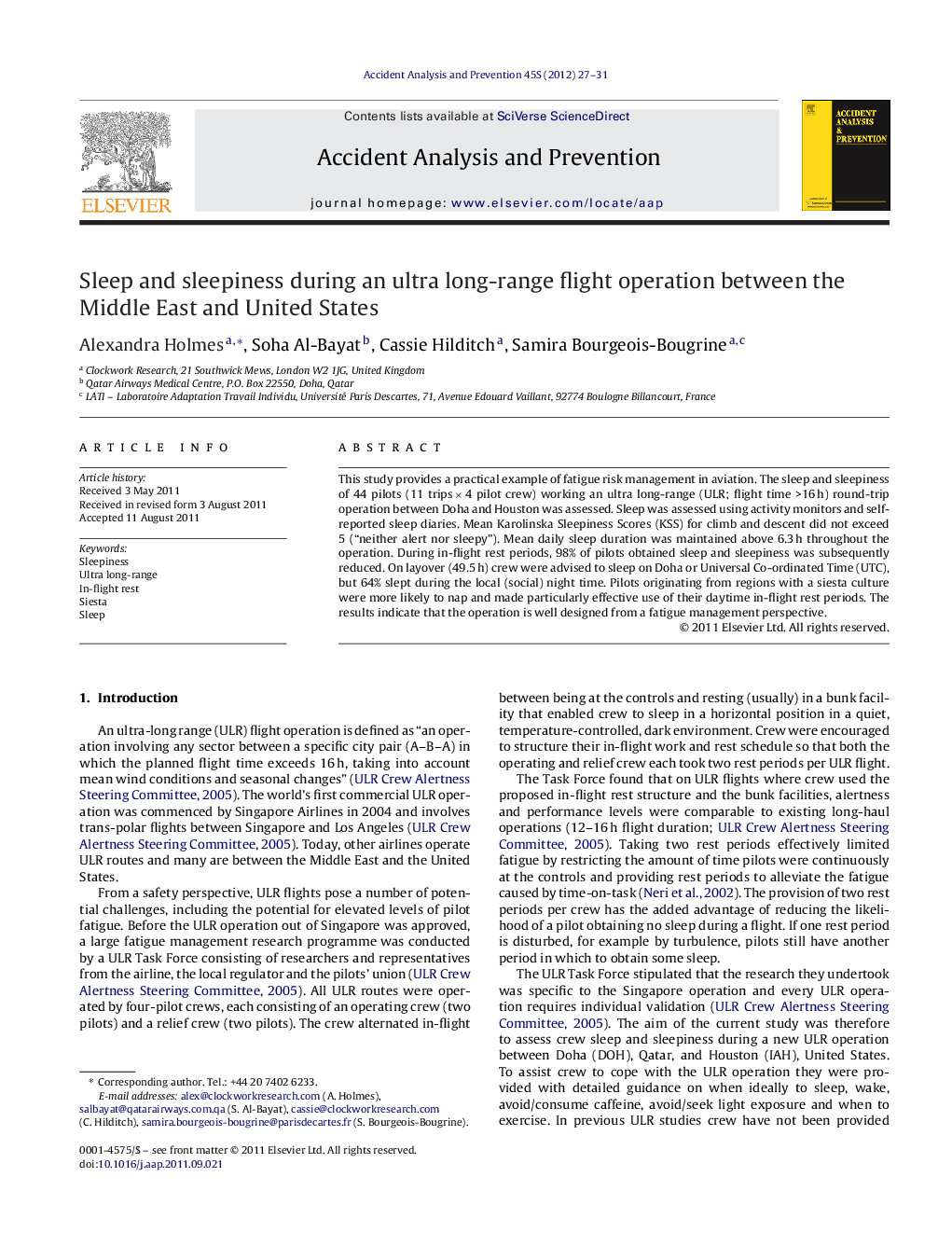| Article ID | Journal | Published Year | Pages | File Type |
|---|---|---|---|---|
| 572902 | Accident Analysis & Prevention | 2012 | 5 Pages |
This study provides a practical example of fatigue risk management in aviation. The sleep and sleepiness of 44 pilots (11 trips × 4 pilot crew) working an ultra long-range (ULR; flight time >16 h) round-trip operation between Doha and Houston was assessed. Sleep was assessed using activity monitors and self-reported sleep diaries. Mean Karolinska Sleepiness Scores (KSS) for climb and descent did not exceed 5 (“neither alert nor sleepy”). Mean daily sleep duration was maintained above 6.3 h throughout the operation. During in-flight rest periods, 98% of pilots obtained sleep and sleepiness was subsequently reduced. On layover (49.5 h) crew were advised to sleep on Doha or Universal Co-ordinated Time (UTC), but 64% slept during the local (social) night time. Pilots originating from regions with a siesta culture were more likely to nap and made particularly effective use of their daytime in-flight rest periods. The results indicate that the operation is well designed from a fatigue management perspective.
► An example of evidence-based fatigue risk management in the aviation industry. ► First published study of a ULR operation between the Middle East and United States. ► When at the controls, pilots had acceptable levels of sleepiness. ► Sleep duration maintained >6 h 20 min per day before, during and after the trip. ► During the day, crew from siesta cultures had more naps and in-flight sleep.
